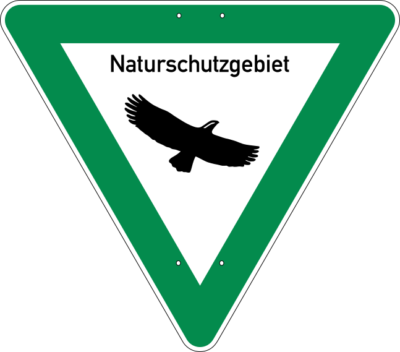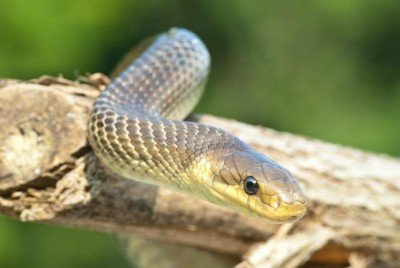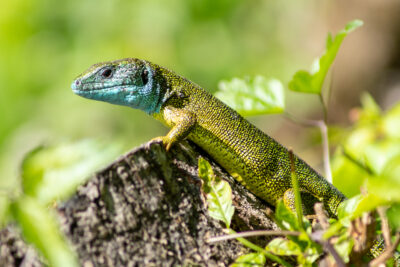The Donauleiten from Passau to Jochenstein
The nature reserve (NSG) “Donauleiten von Passau bis Jochenstein” is part of the European protected area system NATURA 2000, an important network of European protected areas.
The nature reserve was designated in 1986 and covers an area of 401 ha. It extends over several parts over a length of approx. 30 km, from approx. 290 m above sea level to approx. 550 m above sea level. The slopes show clear differences in their temperature distribution; on the upper slopes it is at least temporarily a few degrees cooler than at the foot of the slope.
Figures, facts, data at a glance
Nature, geography:
Part of the 90 km long narrow valley in the southeast of the Bohemian Basement between Hofkirchen an der Donau in Bavaria and Aschach an der Donau in Upper Austria. Mostly south-facing steep slopes. Altitude between 290 m above sea level and 550 m above sea level.
Geology:
Epigenetic breakthrough valley from the Jungtertiary, rocks of the Moldanubian floe (“Bunte Serie”). Mainly pearl gneiss and granite, in places calcareous lentils (marble) and graphite.
Geographical situation:
prealpine/ montane group: from the Alps and the Bavarian Forest, e.g. cyclamen, wood whiskers, alpine bells, alpine shrike, agate rock snail, brown button snail
subatlantic group: from western areas with balanced conditions, e.g. sage-gamander, black striped fern
continental group: from eastern steppe areas, e.g. large-flowered foxglove, bleaching fescue, mountain garlic, upright forest vine, seven-spotted trestle, whorl snail, Russian bear
sub-Mediterranean group: especially warmth-loving species, sometimes relic occurrences and “outposts”, e.g. pimpernut, common medlar, immune leaf, Aesculapian snake, emerald lizard
Use & History

In the past, the Danube waterways were used in phases and locally – often on a small scale. Depending on resource requirements. There were various forms of use: low and middle forest like use, litter extraction, forest pasture, birch forest management, in the Middle Ages partly viticulture (Obernzell, Passau).
Today, moderate use of firewood in strip-shaped clear cuts with natural regeneration or removal/ felling of individual trees (plenter economy). Among other things, the removal of dead wood for the production of wood chips. The Danube waterways are not very well developed, which makes it difficult to extract wood.
More information about use and history? HERE!
Plants & Animals
Etwa 450 verschiedene Pflanzenarten, darunter Raritäten wie die Michelis-Segge (Carex michelii), Neunblättrige Zahnwurz (Dentaria enneaphyllos), Klebriger Salbei (Salvia glutinosa), Karthäuser Nelke (Dianthus carthusianorum), Schwalbenwurz (Vincetoxicum hirundinaria), Große Fetthenne (Sedum maximum) und viele andere.
Über 1600 Tierarten. Unter den hier vorkommenden Arten sind etwa 88 Vogelarten wie der Uhu, Schwarzstorch, Baumfalke, Wespenbussard, Haselhuhn, Wasseramsel, Neuntöter und Pirol zu nennen. Allein 7 verschiedene Reptilienarten kommen in diesem Gebiet vor, darunter die deutschlandweit sehr seltene Äskulapnatter und Smaragdeidechse. Desweiteren kommen hier 8 verschiedene Amphibienarten, über 500 Insektenarten, 96 Molluskenarten und 55 Spinnenarten vor.
protection status

The Donauleiten are protected due to their special importance for the local flora and fauna.
Nature reserve (NSG) “Donauleiten from Passau to Jochenstein” since 1986, 401 ha
Landscape protection area (LSG) “Donauengtal Erlau – Jochenstein since 1967, updated 1996, 660 ha
Fauna-Flora-Habitat-/ Natura 2000 area, 534 ha (standard data sheet)
Natura 2000, FFH Directive, Donauleiten, Donautal

Important information!
The official regulation for the Donauleiten nature reserve can be found here.
An official map with the borders of the nature reserve can be found here.
reptiles

The diversity of reptile species in the Donauleiten, which is unique in Germany, was one of the main reasons for the designation of the “Donauleiten von Passau bis Jochenstein” nature reserve in 1986.
The nature reserve is home to 7 out of 10 species occurring in Bavaria. 4 lizard species and 3 snake species are native here: Eastern emerald lizard (Lacerta viridis), sand lizard (Lacerta agilis), wall lizard (Podarcis muralis), Anguis fragilis (slow worm), Aesculapian snake (Zamenis longissimus), grass snake (Natrix natrix), smooth snake (Coronella austriaca).
The common (sympatric) occurrence of the emerald lizard and the Aesculapian snake is very special and unique in Germany. Both species are extremely rare in Germany – they are more common in southern and southeastern Europe. Especially the Aesculapian snake is – contrary to what one might think – a “forest dweller”. It uses the near-natural forests of the Donauleiten and seeks out rocky areas, treetops or forest edges to sunbathe. It can also often be found near settlements. The emerald lizard, on the other hand, avoids settlements and needs more open, sunny habitats. However, it also prefers areas rich in cover, such as forest edges or bushy slopes.

The wall lizard is the only species in the Passauer Donauleiten that has not found its way here on its own. It was probably released in the 1930s in Passau and has since spread successfully and is probably the reptile species with the most individuals in the Donauleiten. It does not pose any danger to other animals. On the contrary – one can assume that the Smooth Snake, which prefers other reptiles, benefits from the wall lizard.
If you want to find out more about reptiles, take a look at the following pages:
State association for ampgibia and reptile protection in Bavaria registered association.
www.feldherpetologie.de – Species profile Eastern Emerald Lizard
stag beetle

The stag beetle is a rather rare animal in Bavaria. Especially in southern Bavaria, its populations have declined considerably in recent decades. This is probably due to changes in the forest and the landscape in general, so that the stag beetle no longer finds sufficient habitat.
One of the few larger populations of the stag beetle in southeast Bavaria is located in the Donauleiten. In some places dozens of beetles can still be found here. In order to keep it that way, an attempt is made to preserve a large supply of deadwood – the food basis of the stag beetle larvae. But not only today, also in earlier times humans paid attention to the stag beetle. Already in the literature of antiquity there are references to this impressive and largest native beetle. The Greek poet ARISTOPHANES (448 -380 B.C.) tells in his comedy “The Clouds”, verse 761 – 763, of a children’s game that was common in ancient Greece and in which stag beetles tied to a thread had to sail through the air to the delight of the children. Also in later times this was a popular children’s game. And still today in France the term “cerf-volant” (flying stag) stands equally for the stag beetle and the kite. Numerous other myths entwine around the animal. The Germanic tribes, for example, attributed supernatural powers to it and connected it with the god Thor (Donar). As a divine being, the beetle is said to have attracted lightning bolts. Other traditions tell of stag beetles which are said to have carried glowing charcoal from the charcoal mileage with their tongs into the houses of humans. Popular names such as Donnaguggi or Hausbrenner have survived to this day. Positive knowledge, though outdated today, has also been handed down from earlier times. The ashes of the stag beetle are said to have an aphrodisiac effect. The animals were also used as oracles or against magic. In some regions of Bavaria, the “antlers” of the stag beetle were worn on the Charivari (jewellery chain on leather trousers). As amusing as the stories from earlier times may be, it is sad to see the fate of the stag beetle. In 1749, the natural scientist Johann August Rösel von Rosenhof wrote “Whether he [the stag beetle] is known to everyone, and even to children, […]”. Today, only a few people, especially the elderly, know the stag beetle; very few have ever seen one. This is probably not due to the lack of interest in this impressive insect. The reason is much more the present rarity of the animal in Bavaria. The main reason for this is probably the disappearance of near-natural deciduous forests from the Bavarian landscape. Already over 200 years ago one began in Bavaria with the cultivation of spruce dominated forests. Where once extensive and structurally rich deciduous and mixed forests foxed, today one often finds poorly structured, monotonous spruce and mixed forests. The second cause is the understanding of order and cleanliness in German forests. Dead wood lying on the ground and tree stumps – the food basis for the larvae of the stag beetle – were not tolerated and disappeared in many places.
Have you discovered a stag beetle in the Passau Danube valley or in the surrounding area? Then please send an email to s.zoder@hausamstrom.de with location, date and preferably a photo. Thank you very much! This will help you to find out more about the local stag beetles.
